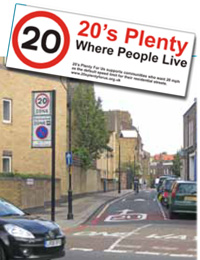In the midst of the year’s first winter storm, residents of Park Slope and nearby communities got together not to complain about falling snow, but to explore how to take it slow.
Some 75 people came to the Civic Council’s community meeting on neighborhood slow zones on Jan. 21, held at Congregation Beth Elohim. They learned what a 20-mph slow zone would mean for the community; heard from officials both local and from Manhattan; saw presentations on the four-month-old zone in the Bronx and on Park Slope traffic; and discussed if, how, and where zones and other measures should be set up in the community.
Civic Council President Michael Cairl welcomed everyone to the meeting, then introduced elected officials in attendance, starting with one of the meeting’s co-sponsors, Councilmember Brad Lander. “Most of the calls to our office are on traffic safety,” Lander said. “Getting traffic to slow down, especially in front of schools, homes, churches, and synagogues, is very important.”

Manhattan Borough President Scott Stringer, who joined Lander at the meeting, recalled the conference he recently hosted at John Jay College, “Transportation 2030: A Five Borough Blueprint.” “We are not getting speeding under control,” he said. “What we decide here will have an impact on all five boroughs.”
“We’ve done an excellent job of reducing accidents,” State Senator Eric Adams added later in the meeting. A model can be set, however, “if we go to the 20-mph mark and [create] safe streets where motorists and pedestrians can both use the streets safely.”
“The challenge we have is how do we make sure that [drivers] know [20 mph] is the rule, for people who live here and people outside the zone,” said Councilmember Stephen Levin, another co-sponsor. “There has to be enforcement,” a sentiment that drew much applause.
The Civic Council organized the meeting toward a goal of making streets more livable for all users — drivers, pedestrians, and cyclists. Neighborhood slow zones would limit traffic in a small, mainly residential, self-contained area to 20 mph, a much safer speed for pedestrians crossing the street (see chart here).
After a description of what slow zones are and how the proposal process would work, Cairl led a presentation on the Civic Council’s field trip to the Bronx neighborhood of Claremont, site of the city’s first such slow zone — “food for thought” about how the program might be set up in our community. (For further details, see “Can Slow Zones Work in Park Slope?”; the presentation is available for download.) He also introduced a film from Streetsblog in which Senator Adams and members of the Civic Council and Transportation Alternatives joined Rod King, director of the United Kingdom’s 20’s Plenty for Us campaign, to explore how such a speed limit might work in Park Slope. (Visit bit.ly/streetsblog-film-PSwalk to view this informative film.)
Daniel Murphy, executive director of the Pitkin Avenue Business Improvement District, led a question-and-answer session that explored community ideas and concerns over the program. Many issues were raised, among them using speed humps to control speeds; including neighborhoods surrounding Park Slope in proposing slow zones; timing streetlights better; involving public schools in the process; improving pedestrian awareness while crossing the street; and increasing traffic enforcement. One man asked for a show of hands for those in favor of some sort of slow zone; a majority of attendees supported the idea.
“This meeting is just the beginning of the process for neighborhood slow zones,” Murphy said. “Even with any application, the conversation will continue” in the community.
Surveys were handed out at meeting’s end. About two-thirds of attendees completed the questionnaires, the results from which will be used to guide any local slow-zone proposal to the city’s Department of Transportation, under whose aegis this community-based program falls. “It’s great to see this level of interest in safer streets,” Cairl said.
(The full report from the meeting and more documentation, audio, and video are available on our website, www.parkslopeciviccouncil.org/slow-zones.)
— David Herman is editor of Civic News.
from the Winter 2012 Civic News

